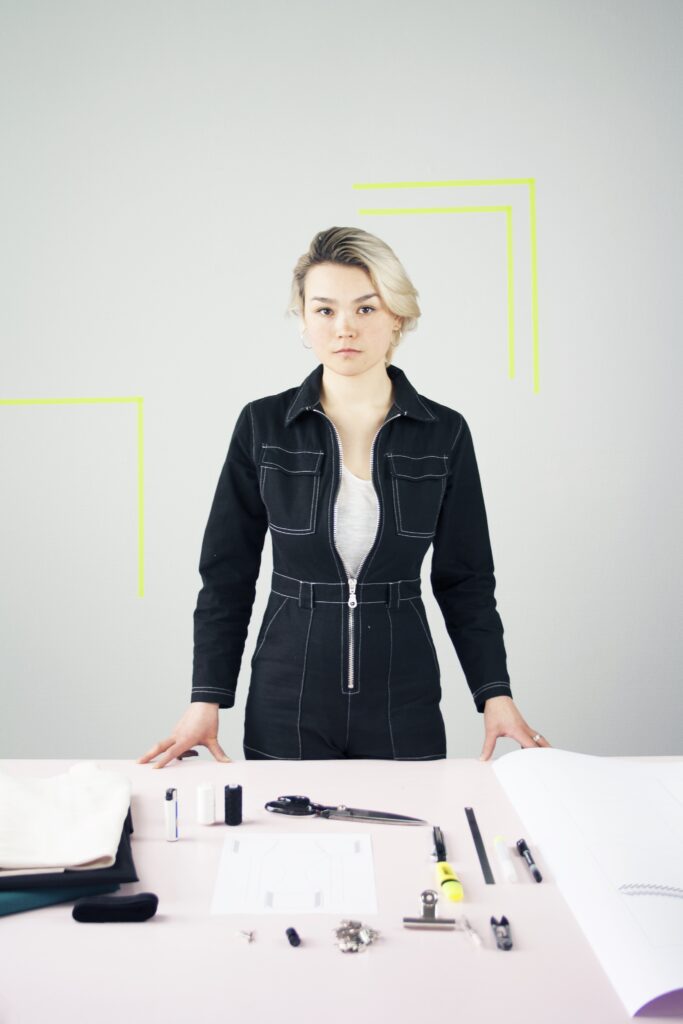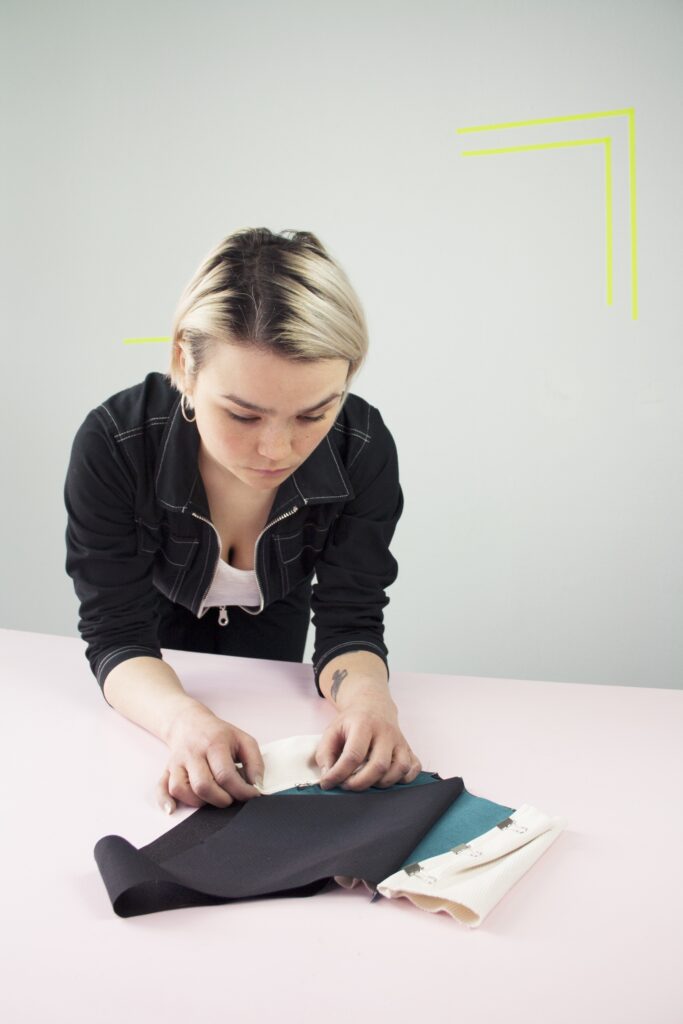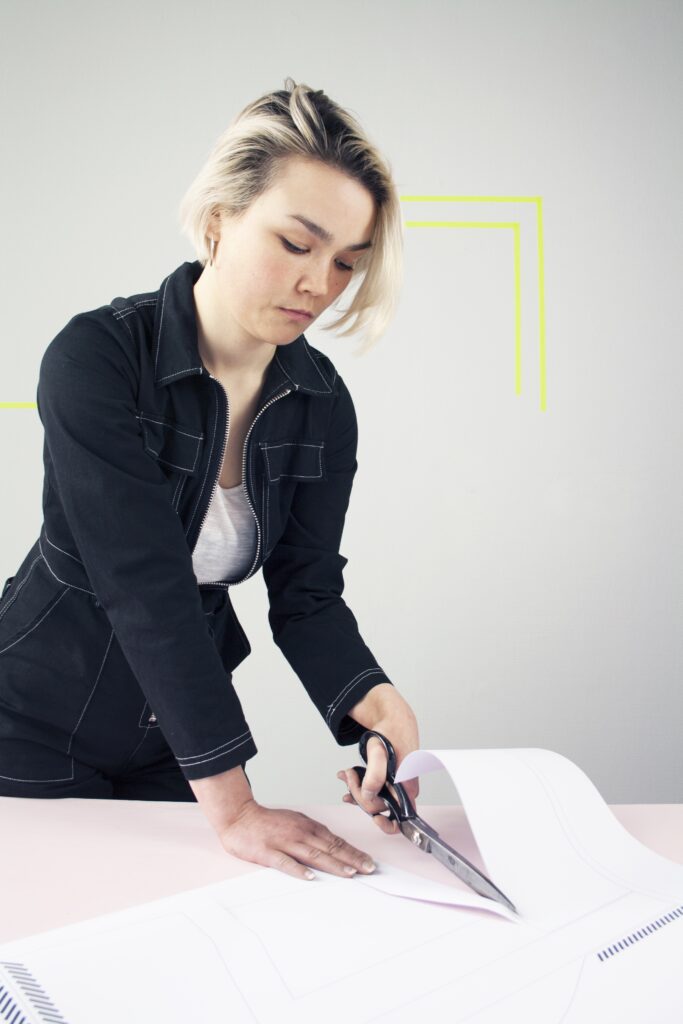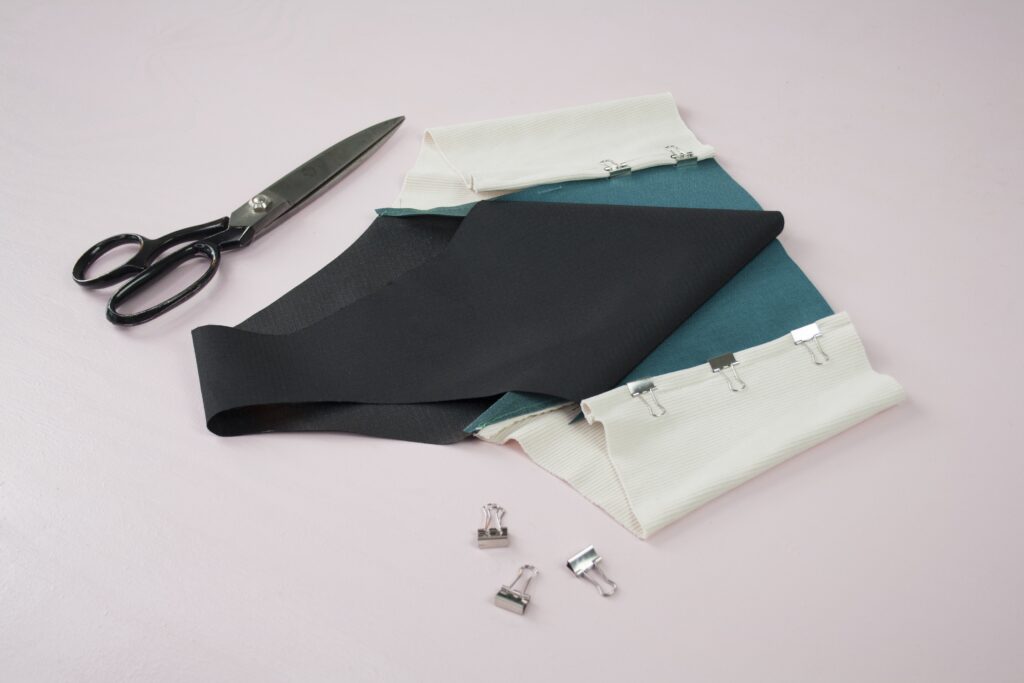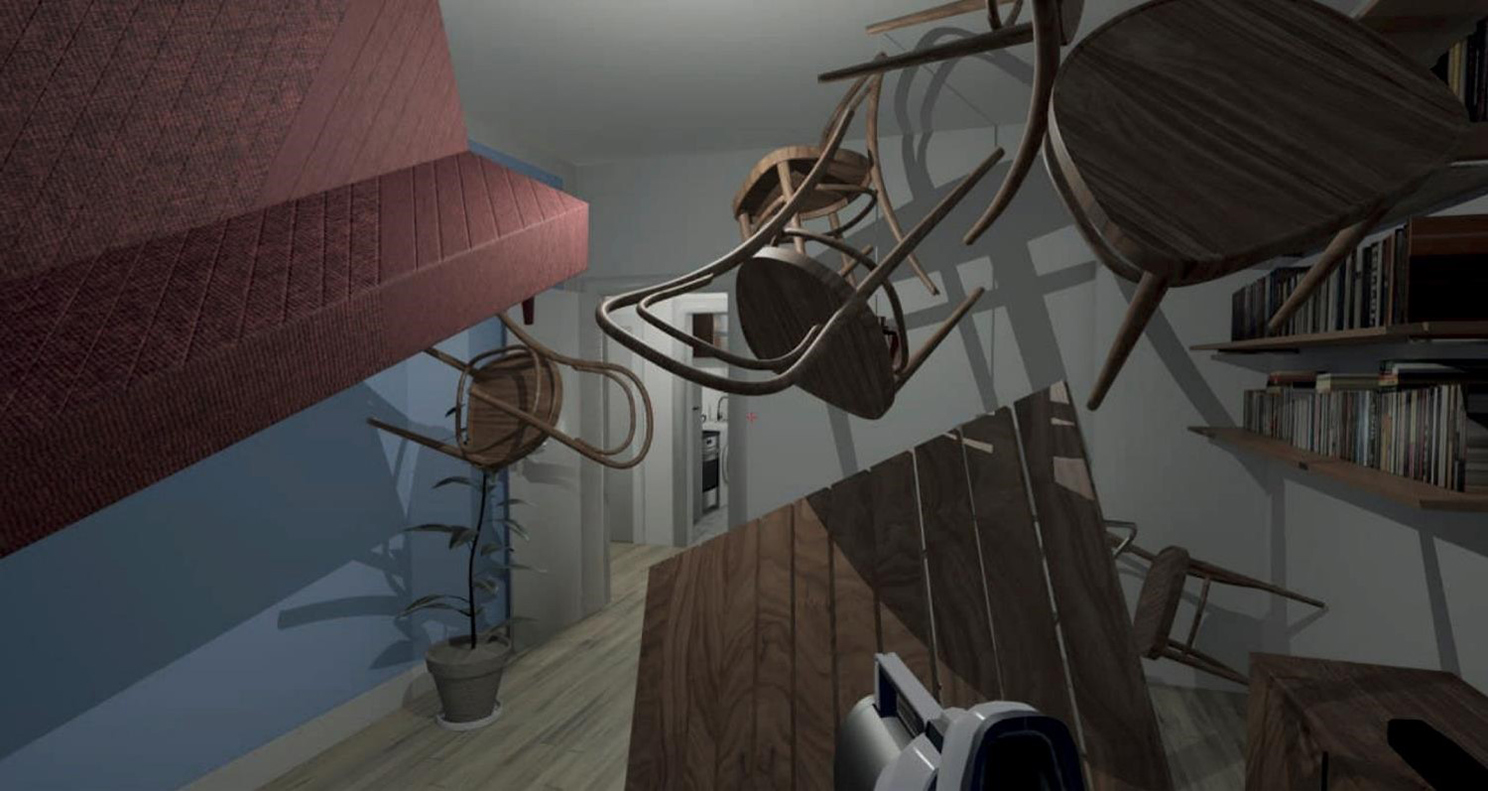Textil- und Flächendesign
Deutsch
English
THE DIAPER PROJECT, WS 20/21
SCENARIO
A return to ‘Business as usual’ after the Covid 19 pandemic led to a crescendo of over production, depletion of natural resources, destroying of wild spaces, and
the continued decrease in cultural and bio-diversity, a succession of natural disasters reached a climax when a severe hurricane swept the globe leaving destruction in its path.
By the year 2121 the environment has become dangerously polluted and whether conditions are harsh. Many of the world’s major cities have climates dominated by extreme precipitation events and severe droughts, with no defined seasons.
The habitable land consists of North America, Europe and Oceania where the earths remaining population lives in overcrowded cities. Sea levels have risen by 3 meters, flooding coastal cities. Many capital cities have relocated to less exposed regions, governments have crumbled or struggle to maintain any substantial order.
Un-sustainable agricultural practices lead to a loss of 97 % of the earths fertile top soil. The lack of fertile soil and diverse wild spaces, contributing to the acceleration of global warming. People were forced from their homes in the search for safe food and shelter, settling for a time and often forced to move on for economic, political or environmental reasons.
Megalopolis spreading for vast expanses of land, force fractured agricultural spaces. Manufacturing and production are submerged in the cities. Innovative, and sometimes questionable, practices in food and fibre production are supported by the chaotic network of knowledge and resources that have been forced into the explosive environment of these cities.
The focus on solving the problem of pollution, produces products and initiatives to benefit the environment. Production methods are efficient and produce little waste.
CONCEPT
A global drive for economic growth, contemporary consumer culture and mass manufacturing have led to
a world saturated with ‘stuff’, a lot of which is not built to last and ends up entering our environment as trash1. It could be said that in western consumer culture, consumption is correlated with happiness, progress and success; consumers are pushed to buy more, rather than make and repair what they already have 2.
However, the culture of repair and modification still ex- ists to different extents around the world. Partly due to a lack of resources in economically less developed parts of the word, the act of making and modifying things is still widespread. Not because of a want to reuse, repair and re-cycle but due to a necessity to find solutions to problems and needs.
In this speculative design project, Hurricane Willow left devastation in its wake — political instability, economic hardship and lack of access to raw materials. The project proposes open source, D.I.Y maker culture and bio fabrication of adaptive, fast growing materials as a response to this scenario.
The garment exists in an over-crowded urban environment, where the pollution levels are dangerously high. The inhabitants design products and systems to benefit the environment, working towards restoring nature and wild spaces.To extract as much nutrients as possible the garment is not only intended for infants. The diaper consists of two parts, the insert is industrially produced and must be purchased by the consumer.The insert arrives to the consumer in a sanitary cardboard envelope.A digital pattern is supplied for the outer-shell and it is made by the consumer in a maker lab.The projections suggest a user and environmentally friendly solution to diapering.
The design of the insert translates current systems for converting excrement to fertilizer known as biosolids, on to a material surface. The smart material processes the pee and poo the same way industrial composting processes do. Human faeces contain harmful bacteria that makes domestic composting un-safe. Industrial composting sends the faeces through an anaerobic followed by an aerobic process, removing unwanted bacteria3 and making the matter safe for use as compost. Mycelium is the vegetive tissue of the fungus, the root system that provides nutrients to the fruiting body (the mushroom) of the organism. In nature fungi live on dead organic matter, their role is to decompose the matter and recycle it back into the environment.
Current research into mycelium4 shows a wide range of applications, through bio fabrication the fibrous structure can be manipulation to possess desired characteristics5.The material is fast growing, light weight and insulating.The diaper insert is made from an invented material called ‘My-Cilo’.
